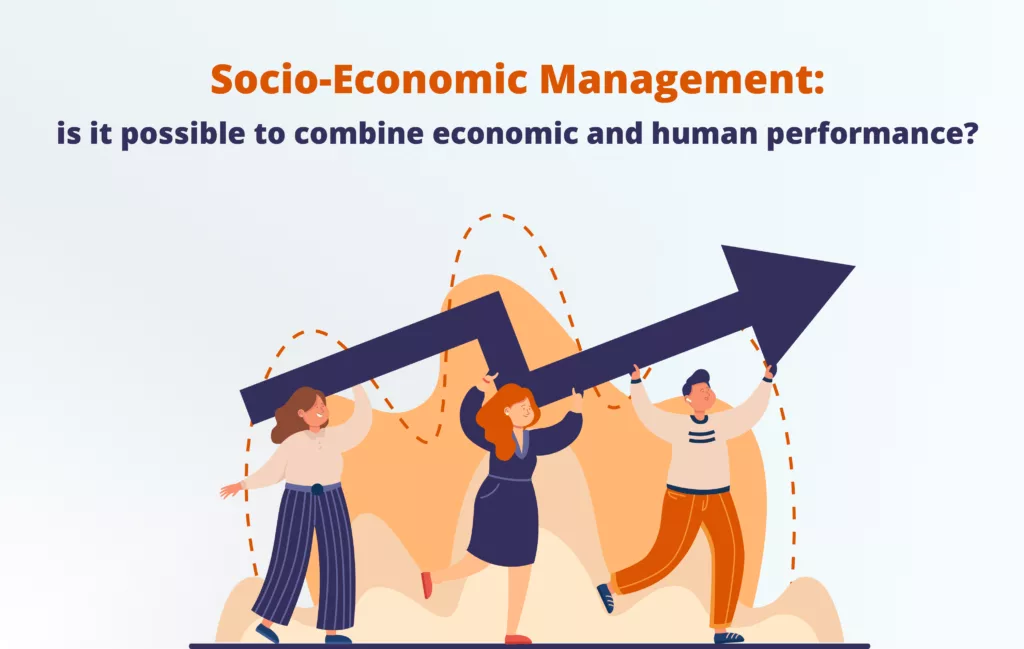What if the real margin were hiding… in what we don’t see? Behind the results lies a grey area made up of dysfunctions and scattered decisions: processes that collide, information that doesn’t arrive at the right time, coordination that goes off the rails, under-mobilized skills, poor allocation of hours… there’s no shortage!
This is where Socio-Economic Management (SEM) comes in. With a wave of the wand, it makes these frictions visible and helps resolve them. Its goal, no small feat, is to better organize work in order to create lasting human and economic value.
Its founding principle is simple yet obvious: economic performance and employee well-being are not opposites. They are two inseparable sides of the same coin.
Hidden costs: the Achilles’ heel of organizations
In the 1970s, following his research, Henri Savall made a striking observation: 40% of a company’s financial impacts slip past traditional accounting. These hidden costs – absenteeism, turnover, misused time, stress, delays, and unidentified workload surges – are numerous. They don’t show up in the financial statements, yet they drag down performance. The first step is to identify them so you can control them. [1]
Socio-Economic Management (SEM) was born from this realization. These dysfunctions aren’t a fatality; they’re untapped reserves of productivity and savings waiting to be captured. By identifying, measuring, and reducing them, companies can free up resources and create additional value.
[1] ISEOR : socio-economic management
Putting people at the center to reduce hidden costs
By digging into the question of hidden costs, Socio-Economic Management (SEM) has brought a fundamental link to light: a large share of hidden costs originates in the way work is organized and in the human environment. Stress, lack of autonomy, bureaucratic processes, and the absence of dialogue between managers and teams… While these may seem trivial, they in fact generate costly inefficiencies.
From there, Socio-Economic Management puts people at the heart of its strategy. Improving working conditions, investing in training, fostering participative management, and instituting equitable compensation policies are no longer mere ‘social bonuses.’ They are concrete levers for reducing hidden costs and boosting performance.
This approach also translates into a culture of dialogue. Employees no longer have decisions imposed on them; they co-create them. They’re encouraged to identify dysfunctions and propose solutions. Everyone is engaged in a process of continuous improvement.
The result? Employees become co-actors of change, empowered and motivated to contribute to collective success.
What does it look like in the field?
In a pioneering hypermarket in western France, Socio-Economic Management is visible both in the aisles and in employees’ day-to-day work. For example, participatory diagnostics are held every six months to tackle employee pain points. Individual goals are set and tracked mid-semester. And to top it off, dashboards combining business data with social/people indicators are used to steer decisions.
The impact? Employee compensation has improved… without eroding margin. Annual pay moved from 13 to 16 months, with an additional bonus tied to semi-annual targets. In other words, the value created by reducing hidden costs is shared, boosting buy-in and employer attractiveness (including for hard-to-staff roles). [2]
[2] Je Bosse en Grande Distribution : what is SEM put in place in several Leclerc stores?
Why it works (and why it lasts)?
Human productivity is elastic.
As soon as you remove the “grains of sand” caused by clunky processes, needless back-and-forth, and under- or overload, you produce more with headcount and hours held constant. Socio-Economic Management (SEM) equips and formalizes this organizational learning and then shares the gains. Because traditional systems struggle to measure the intangible, SEM restores a regular, rigorous management cadence, far from “gut-feel” management.
TimeSkipper and SEM: a shared philosophy
Socio-Economic Management offers a genuine method and philosophy. By making every hour of work count and giving a voice back to frontline teams, with a resolutely field-driven view, TimeSkipper naturally fits into this approach.
By integrating external data (parcel volumes, customer flows, etc.) and a precise time-and-task reference framework, the TimeSkipper solution builds a workload plan for each employee. Day to day, at a glance, the manager spots available time slots and redistributes any overloads. Using reporting and performance-standard analyses, they can assess time spent on low-value tasks. Armed with this objective information, they curb hidden costs and optimize resource allocation.
Equipped with clear, objective data, the manager is better able to lead the team:
- ensures fairness in workload distribution,
- secures task execution.
On the team side, the brief, prepared and formalized thanks to TimeSkipper, lets everyone know exactly what they need to do and why. This real keystone moment of the day is used to explain priorities and deliver feedback. It’s also a time for open exchange, where employees can ask questions and share ideas.
Finally, the TimeSkipper solution helps empower employees and build autonomy. For example, thanks to mobile features, whenever they have time, employees can pick from a shared pool of tasks to complete. And more than that, they can flag a lack of time to complete a task when the unexpected occurs. A colleague can then take it over, encouraging mutual support and responsiveness.
Combining performance and people is possible
In short, TimeSkipper is a SaaS platform that fully aligns with the socio-economic management approach. It makes it easier to steer frontline teams and consistently combine performance with people, never sacrificing one for the other.





